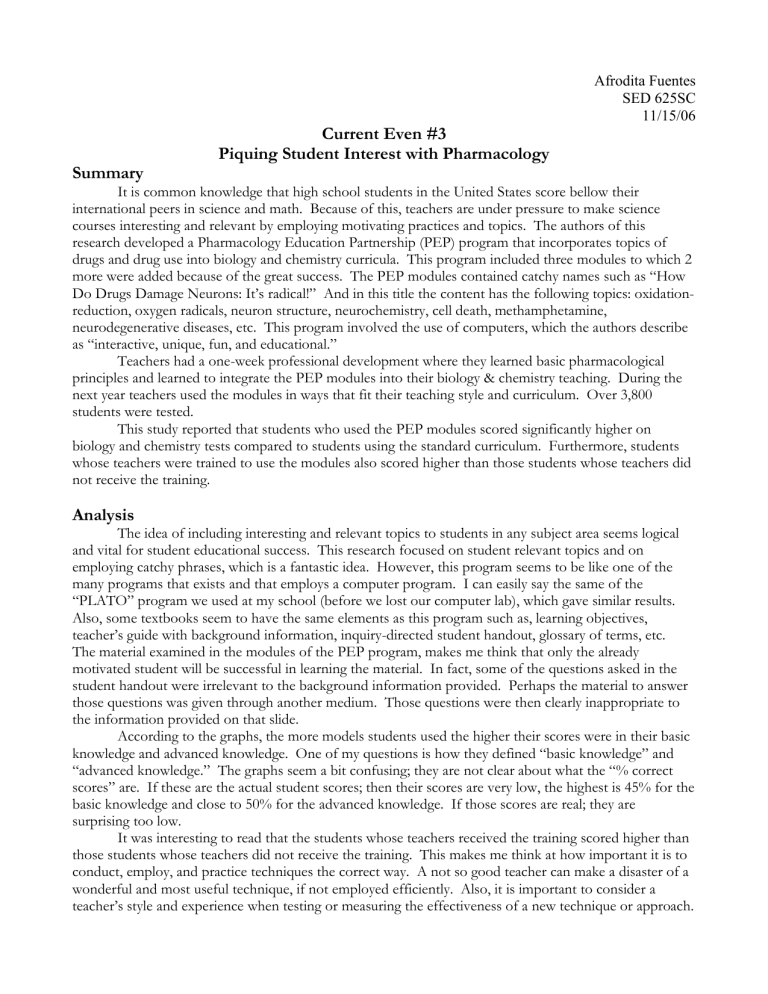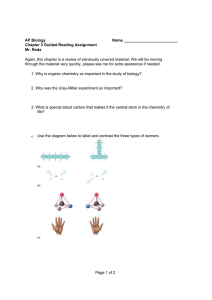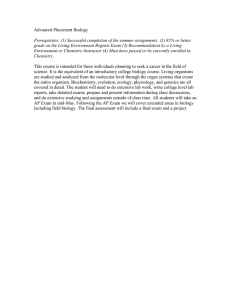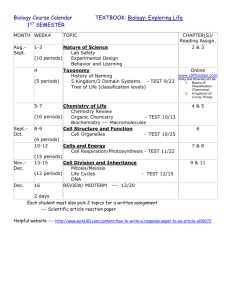Piquing Student Interest with Pharmacology Network for Teacher Learning: Toward a Theory of Effective Design

Afrodita Fuentes
SED 625SC
11/15/06
Current Even #3
Piquing Student Interest with Pharmacology
Summary
It is common knowledge that high school students in the United States score bellow their international peers in science and math. Because of this, teachers are under pressure to make science courses interesting and relevant by employing motivating practices and topics. The authors of this research developed a Pharmacology Education Partnership (PEP) program that incorporates topics of drugs and drug use into biology and chemistry curricula. This program included three modules to which 2 more were added because of the great success. The PEP modules contained catchy names such as “How
Do Drugs Damage Neurons: It’s radical!” And in this title the content has the following topics: oxidationreduction, oxygen radicals, neuron structure, neurochemistry, cell death, methamphetamine, neurodegenerative diseases, etc. This program involved the use of computers, which the authors describe as “interactive, unique, fun, and educational.”
Teachers had a one-week professional development where they learned basic pharmacological principles and learned to integrate the PEP modules into their biology & chemistry teaching. During the next year teachers used the modules in ways that fit their teaching style and curriculum. Over 3,800 students were tested.
This study reported that students who used the PEP modules scored significantly higher on biology and chemistry tests compared to students using the standard curriculum. Furthermore, students whose teachers were trained to use the modules also scored higher than those students whose teachers did not receive the training.
Analysis
The idea of including interesting and relevant topics to students in any subject area seems logical and vital for student educational success. This research focused on student relevant topics and on employing catchy phrases, which is a fantastic idea. However, this program seems to be like one of the many programs that exists and that employs a computer program. I can easily say the same of the
“PLATO” program we used at my school (before we lost our computer lab), which gave similar results.
Also, some textbooks seem to have the same elements as this program such as, learning objectives, teacher’s guide with background information, inquiry-directed student handout, glossary of terms, etc.
The material examined in the modules of the PEP program, makes me think that only the already motivated student will be successful in learning the material. In fact, some of the questions asked in the student handout were irrelevant to the background information provided. Perhaps the material to answer those questions was given through another medium. Those questions were then clearly inappropriate to the information provided on that slide.
According to the graphs, the more models students used the higher their scores were in their basic knowledge and advanced knowledge. One of my questions is how they defined “basic knowledge” and
“advanced knowledge.” The graphs seem a bit confusing; they are not clear about what the “% correct scores” are. If these are the actual student scores; then their scores are very low, the highest is 45% for the basic knowledge and close to 50% for the advanced knowledge. If those scores are real; they are surprising too low.
It was interesting to read that the students whose teachers received the training scored higher than those students whose teachers did not receive the training. This makes me think at how important it is to conduct, employ, and practice techniques the correct way. A not so good teacher can make a disaster of a wonderful and most useful technique, if not employed efficiently. Also, it is important to consider a teacher’s style and experience when testing or measuring the effectiveness of a new technique or approach.
I would also like to know the demographics of the school and/or population of students participating in the program to see whether this program would work at my school. I would also like to know whether these schools are constrained by schedules of periodic assessments like the ones we now have in Los Angeles Unified School District. It seems like the tests given to students were designed to test the program and not the overall performance of the students as tested for the district or the state. If that is the case, then that is a great advantage over the regulations I have to follow. The topics in this program seem to encompass a range of topics within a biology curriculum. For example, one of the modules includes topics from acid-base chemistry to oxidation-reduction to plant cell structure, to tobacco industry economics. It is difficult for me to try to web this together when I know I have to cover certain material at certain times to comply with district testing and state testing. This research reported on what they did but not necessarily on how they conducted their program. A more in depth report would clarify the mechanics of this research.
Reflection
I wish I was more creative to come up with all those catchy phrases to make biology learning fun.
Or have at the very least a collection of such lessons. This group has a website, which claims to offer some free material to teachers, which I will explore as soon as I register for it. This group is also presenting their research at the NSTA conference in Salt Lake City, on December 8 th . I do have a number of interesting and relevant lessons that I use throughout the year, but it is not enough to sustain student motivation for the entire year. Motivation is a very complex component for student success at my school and will be the topic for my research project. Student success however, requires more than motivating students in the classroom. It also requires helping students understand how their success now, not necessarily in science, will determine their success in the future, among other factors. In my small learning community, I have been applying a minor strategy for two years now, to help students make this connection. I do not know the results yet, but I am confident that it will work because it worked with me while I was in college and in my personal life.
An area that was slightly mentioned in this research was the interdisciplinary component of it.
It seems like these students were taking biology and chemistry at the same time, thus having the opportunity to see some material twice. At a minimum, students were able to relate and transfer material from one class to another. Interdisciplinary teaching could be a productive and efficient way of teaching our students. A couple of my AP Biology students are in a Humanitas-based academy where they have the opportunity to enjoy the results of team teaching from their social studies teacher and their English teacher. They have told me that they enjoy learning and completing jointassignments for both classes because they see the connection between the two. I also had the opportunity to attend a Humanitas workshop last week where an English teacher and a marine biology teacher work together very close together. I anticipate team teaching requiring tremendous collaboration, but also providing self-regulating measures to rethink about how the curriculum will be presented to students.
While this research gave me one more idea about how to make biology more relevant to my students; it also made me think of other factors that may contribute to student success in general, not only in science. The advantage is that I am looking into employing these factors; for example, my small learning community will used the Humanitas curriculum in the next year. I will be collaborating in a team that includes an English teacher, a Social Studies teacher, and possibly a math teacher.
It seems that the ultimate success is based in part on how a teacher delivers the lesson employing any strategies that makes him/her comfortable.






